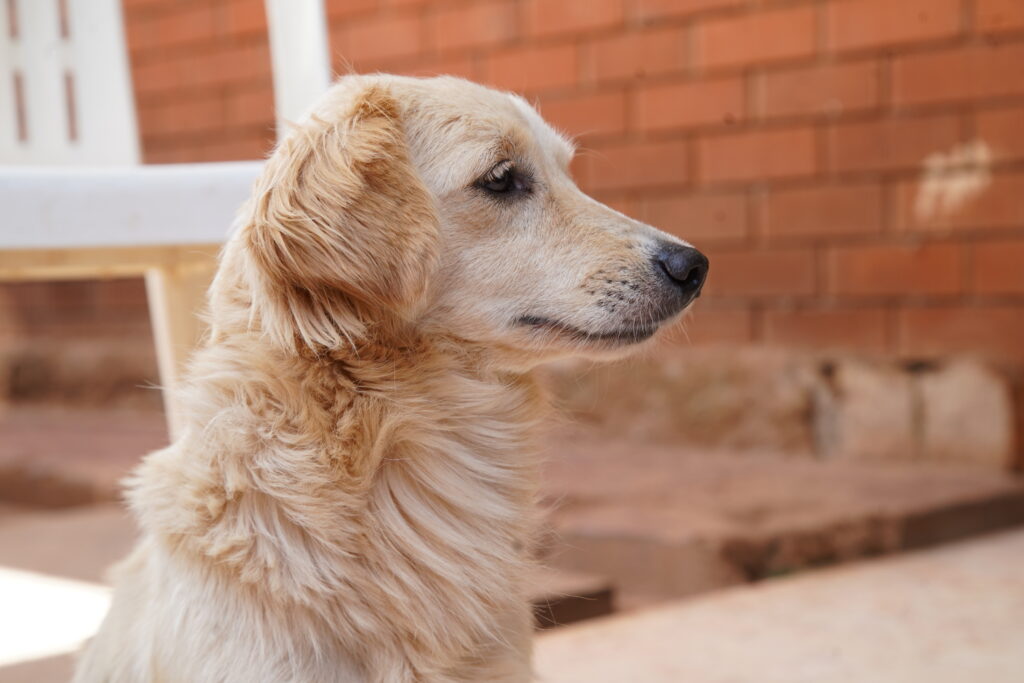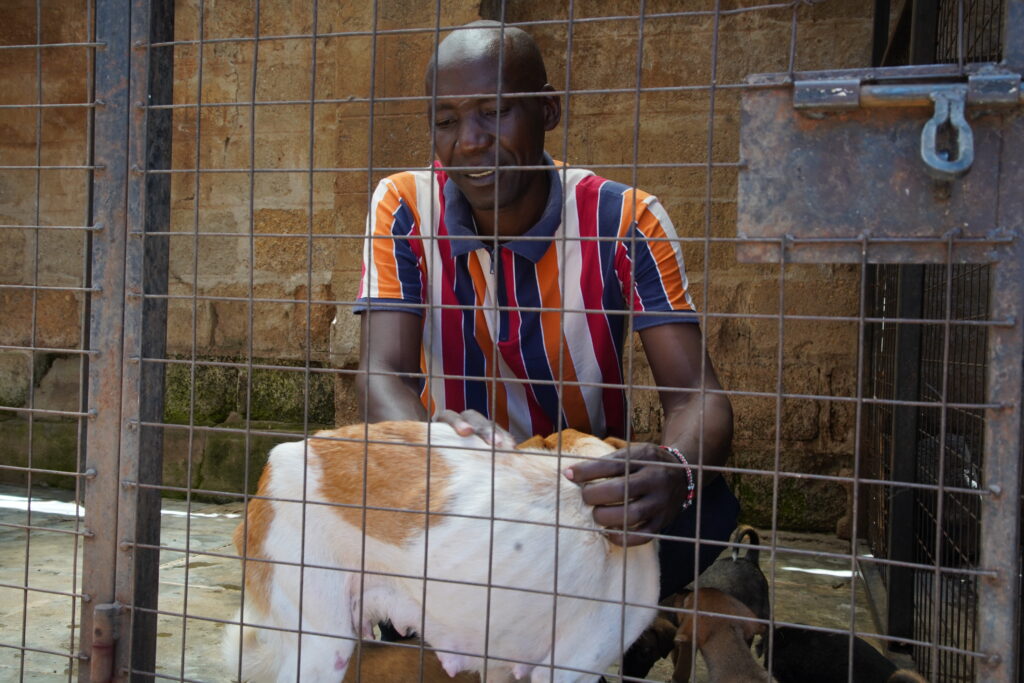Alex Ocheing is becoming a household name in Uganda’s capital Kampala for creating a safe haven for street dogs.
Located in Mbuya, southeast of Kampala, Ocheing has established a rehabilitation center where he offers care to the beasts, most of which stray from home largely because of deficiencies in care and management.
“I take in all the dogs that are unwanted because many of us have pets but lack the knowledge to properly care for them. I can’t bear to see them suffering on the streets without shelter, food, water, or the necessary medication,” Ochieng explains.

A dog rescued from the street pictured at the rehabilitation center in Mbuya outside Kampala. Photo by Richard Mugambe.
In Kampala, dogs serve as the primary source of human rabies, responsible for up to 99% of all transmissions. Most of the victims are school going children who get bitten by unvaccinated dogs.
“Last year, the population of stray dogs in Kampala alone reached 6,000, and this year, I anticipate it will be even higher,” states Dr. Herbert Kasiita, the acting veterinary officer in Kampala.
With this growing population of stray dogs in Uganda, only 10% of them are currently vaccinated, leaving the country’s citizens at risk.
Kasiita emphasizes that the elimination of dog-mediated human rabies hinges on addressing the disease at its source: infected dogs.
“People need to understand how to prevent being bitten by rabid dogs and know how to seek treatment if they are bitten. We must prioritize the vaccination of animals, as it interrupts the cycle of rabies transmission.
If someone is bitten by a rabid animal, they should seek post-exposure prophylaxis (PEP), which involves prompt and thorough cleansing of the wound,” explains Kasiita.

Alex Ochieng with a rescued animal at the shelter in Mbuya outside Kampala. Photo by Richard Mugambe.
A human error
Ocheing attributes the increase in stray dog population and the widespread spread of rabies to the behavior of people engaging in irresponsible breeding practices.
Normally, dogs often produce litters with a large number of puppies, sometimes as many as 10 per birth. However, many individuals are unable to care for such a large number of dogs at home, leading them to release the excess puppies onto the streets.
“These stray animals are a result of human actions, but they multiply on the streets,.This poses a threat to public safety because these animals are not properly cared for, and during mating seasons, they can become aggressive and dangerous,” he remarks, explaining why he chose to create a safe space for strays in Kampala.
The over 300 pets in the shelter are as a result of community members who contact the shelter seeking assistance or abandon the animals. Ochieng is sometimes required to stretch beyond the city into its neighborhood.
At the facility, the rescued animals undergo thorough examinations to assess their health condition. They are assessed for any wounds or injuries, as well as other health issues. The animals are also sterilized to control the population at the facility.
“Thereafter, we administer the treatment, including vaccination to all new arrivals to prevent the spread of illness to vaccinated animals already in the shelter. We monitor the animal’s progress until fully recovery,” Says Sandra Nakabuye, the veterinary officer at the facility

A cat at the animal rescue shelter. Photo by Richard Mugambe.
Established in 1996 with just 20-30 animals, Ocheing remains hopeful that the shelter will expand, allowing for the care of more animals while preventing overcrowding and also serve as an animal adoption center.
“Currently, we have 10 foster homes, with some individuals fostering animals for 1 or 2 years, depending on their capacity to care for them. We conduct follow-ups to monitor the animal’s condition, particularly its health and nutrition. If the animal is well taken care of, the fosterer can then request to adopt it permanently,” explains Ocheing.
In addition to sheltering animals, the model emphasizes the importance of raising awareness about animal rights, safety, and care. This is achieved through community outreach initiatives in schools, churches, villages, and clubs, where the public is educated on proper care for their pet dogs and cats.
He emphasizes that by rescuing one cat or dog at a time, “we are not only preventing rabies and other animal-related diseases but also honoring and upholding animal rights, just as we do for human beings”.
Recent News
© 2022 - Media Challenge Initiative | All Rights Reserved .


